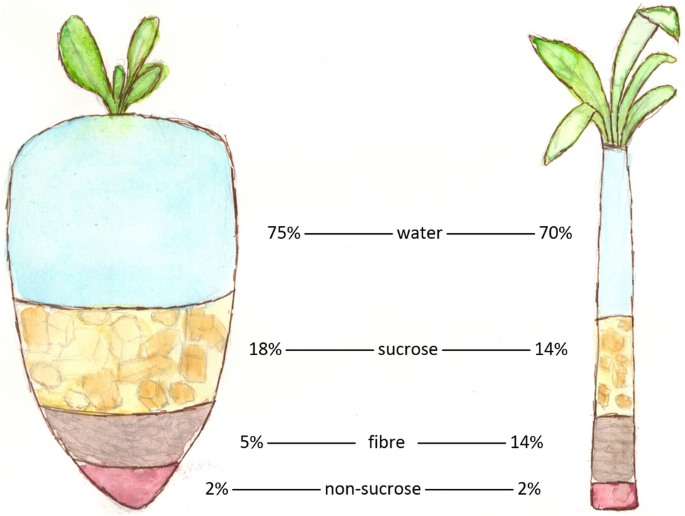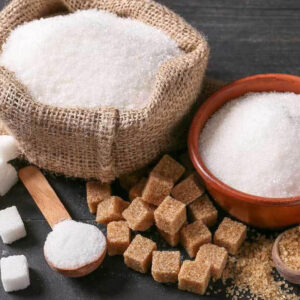The agricultural practices for beet sugar vs cane sugar contribute to differences in processing efficiency.
Checking Out the Differences in Usages and Advantages In Between Beet Sugar Vs Cane Sugar
In the culinary globe, the option between beet sugar and cane sugar is not simply concerning sweet taste but entails a nuanced factor to consider of flavor, application, and impact. While both sugars originate from various plants, each goes through unique production procedures that subtly influence their qualities and viability for various dishes. As cooks and consumers increasingly focus on both the environmental and flavor accounts of their ingredients, comprehending these differences becomes essential. This expedition uses understanding right into how each sugar type can best boost culinary developments.
Beginnings and Production Procedures of Beet and Cane Sugar

Cane sugar, on the various other hand, comes from the sugarcane plant, an exotic yard indigenous to Southeast Asia today cultivated in tropical zones worldwide. The manufacturing of cane sugar begins with the harvesting of cane stalks, which are crushed to launch the juice. This juice is after that steamed to concentrate it, after which it is spun in centrifuges to create raw sugar crystals. These crystals are additional refined to create the white sugar frequently readily available in shops.

Nutritional Content and Health And Wellness Considerations

When comparing the nutritional content of beet sugar and cane sugar, it comes to be evident that both kinds essentially supply the very same caloric worths, with about 16 calories per teaspoon and no substantial nutrient variety. Both sugars, when consumed in excess, can add to elevated blood glucose levels, a threat aspect for diabetic issues and other metabolic disorders. From a wellness point of view, moderating intake of any kind of kind of sugar, whether from beet or cane, is a good idea to avoid these potential negative effects on well-being.
Taste Accounts and Culinary Applications
Regardless of their similar chemical structures, beet sugar and cane sugar vary subtly in taste, which can influence their use in various cooking contexts. Cane sugar usually lugs a tip of molasses, also in its polished kind, lending a warm, caramel-like undertone that enhances baked goods, coffee, and chocolate-based recipes. This mild molasses flavor is specifically valued in the baking industry for adding depth to desserts and pastries. On the various other hand, beet sugar is defined by its highly fine-tuned, neutral preference, making it a versatile sweetener that does not alter the taste profiles of recipes. This neutrality is particularly advantageous in fragile dishes, such as light pastries, creams, and some sauces, where the integral tastes of various other active ingredients are meant to stand apart. As a result, chefs and food makers might select one sort of sugar over the other based on the desired flavor end result of their culinary creations.
Ecological Impact and Sustainability
While both beet and cane sugars are obtained from plants, their environmental effects differ considerably due to the unique approaches of cultivation and handling needed for each. Sugar beet growing frequently includes considerable automation, which can navigate here boost fossil gas usage and carbon exhausts.
Moreover, the handling of sugarcane typically creates a significant quantity of waste, including bagasse, which, although functional as biofuel, often adds to air contamination if shed inefficiently. Sugar beet handling utilizes more of the raw materials, leading to less waste. Both industries encounter difficulties in lowering their environmental footprints, however recurring innovations in farming practices and waste management are aiming to boost sustainability.
Economic Aspects Influencing the Sugar Market
The financial view dynamics of the sugar industry are dramatically affected by international market demands and profession plans. Elements such as tolls, subsidies, and worldwide trade agreements play critical functions fit the competitive landscape. As an example, in regions where sugarcane or sugar beet production is subsidized, manufacturers might have a financial advantage that enables them to provide lower rates on the international market. This can produce disparities in productivity and market access for producers in nations without such aids.
Additionally, variations in international need for sugar, affected by nutritional patterns and industrial usage in foodstuff, straight effect costs and manufacturing levels. beet sugar vs cane sugar. Climate condition likewise play a critical function, as they can substantially influence crop returns and, subsequently, the supply chain. This variability presents a degree of financial uncertainty that can result in financial investment volatility in sugar manufacturing sectors, affecting decisions from planting to market technique
Final Thought
In final thought, both beet and cane sugar have one-of-a-kind qualities that fit different culinary requirements. While cane sugar imparts an abundant taste suitable for improving baked products, beet sugar's neutrality you can check here is perfect for lighter recipes. Nutritional resemblances regardless of, their distinct manufacturing processes and ecological effects add intricacy to the option between them. Therefore, recognizing these differences assists chefs and consumers make notified choices that align with their wellness, cooking, and ethical preferences.